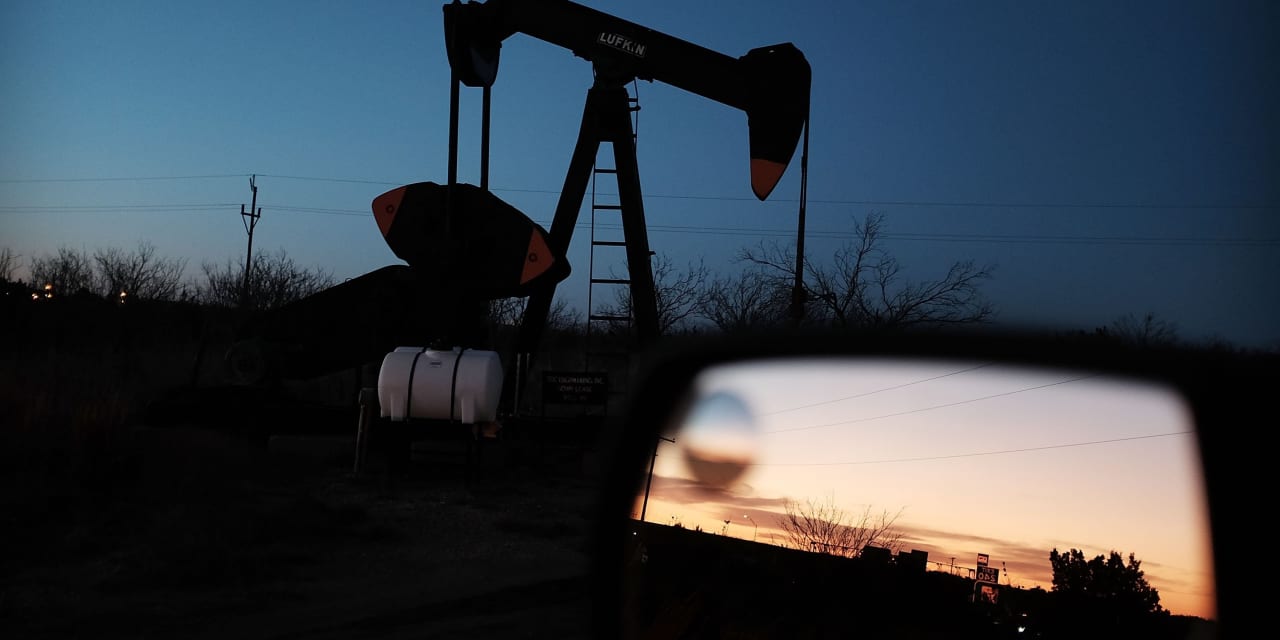Oil futures notched a second gain in a row Tuesday to settle at a more than two-week high as recent attacks on ships in the Red Sea stoked worries over potential supply disruptions.
Price action
-
West Texas Intermediate crude for January delivery
CL.1,
+0.04% CLF24
gained 97 cents, or 1.3%, to settle at $73.44 a barrel on the New York Mercantile Exchange on the contract’s expiration day, marking the highest finish since Dec. 1, according to Dow Jones Market Data. February WTI crude
CLG24,
+0.04% ,
which became the front month at the end of the session, added $1.12, or 1.5%, to $73.94. -
February Brent crude
BRN00,
+0.27% BRNG24,
+0.27% ,
the global benchmark, rose $1.28, or 1.6%, to $79.23 a barrel on ICE Futures Europe, the highest finish since Nov. 30. -
January gasoline
RBF24,
-0.60%
tacked on 1.9% to $2.20 a gallon, while January heating oil
HOF24,
+0.08%
climbed nearly 1.7% to $2.72 a gallon. -
Natural gas for January delivery
NGF24,
-1.32%
settled at $2.49 per million British thermal units, down 0.4%.
Market drivers
Brent crude settled Tuesday at its lowest level since late November, while WTI crude ended at a more than two-week high, with the latest support for prices tied to Monday’s news that oil major BP PLC
BP,
BP,
said it was temporarily suspending shipments through the Red Sea.
Read more: Attacks in the Red Sea add to global shipping woes
Several shipping companies had previously announced they would pause shipments due to a series of drone and missile attacks by Houthi rebels, who largely control Yemen, since the start of the Israel-Hamas war.
The “longer-term impact on oil prices of Houthis’ attacks on oil tankers through the Red Sea is a complicated one, but the attacks do have immediate repercussions: delay in delivery of crude and higher shipping costs,” said Fawad Razaqzada, market analyst at City Index and FOREX.com, in emailed commentary.
Given that, “the oil price gains are justified,” he said in market commentary. Still, it’s “very difficult to say how long the gains will last for, or how much higher will prices go from here on, just on the back of this factor alone.”
Read The Year Ahead: Why oil may not see a return to $100 a barrel in 2024
Crude prices had risen modestly after the Oct. 7 Hamas attack on southern Israel on fears of a wider conflict, but soon gave up those gains to trade at roughly six-month lows early last week before seeing a modest bounce.
“As the holiday season approaches, a stable outcome for the region looks elusive,” said Stephen Innes, managing partner at SPI Asset Management, in market commentary. “The longer the war in Gaza rages on, the escalating humanitarian crisis may intensify political pressure on various actors, potentially leading to an expansion of the conflict.”
““The longer the war in Gaza rages on, the escalating humanitarian crisis may intensify political pressure on various actors, potentially leading to an expansion of the conflict.” ”
And “in the midst of rocket attacks and bombings, the fog of war increases the likelihood of unpredictable events and significant miscalculations, potentially resulting in further escalation,” said Innes.
Read the full article here




